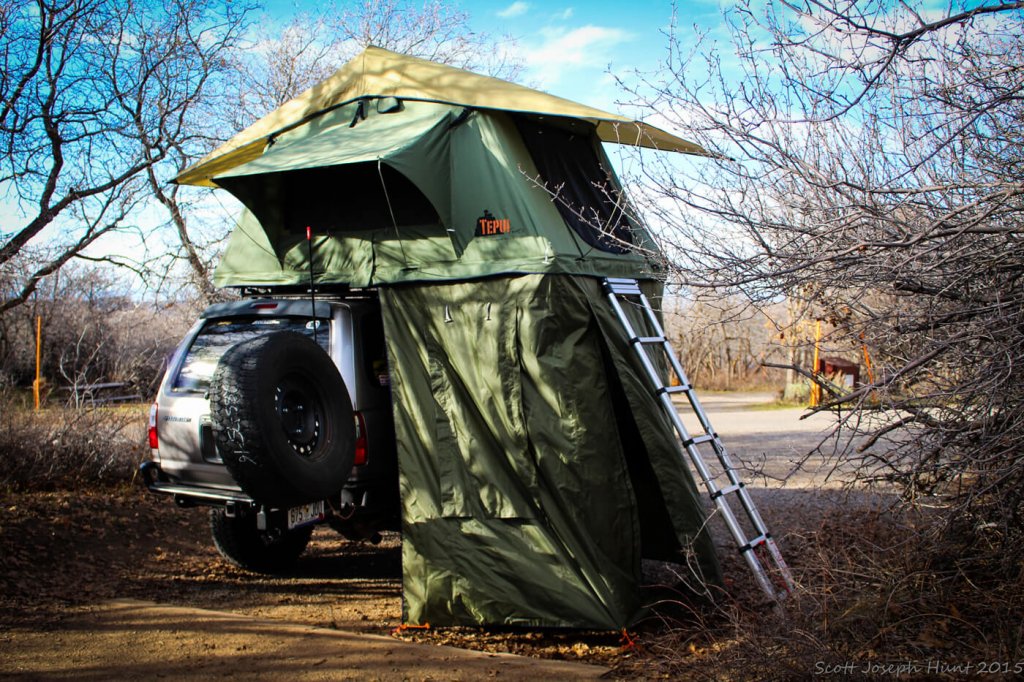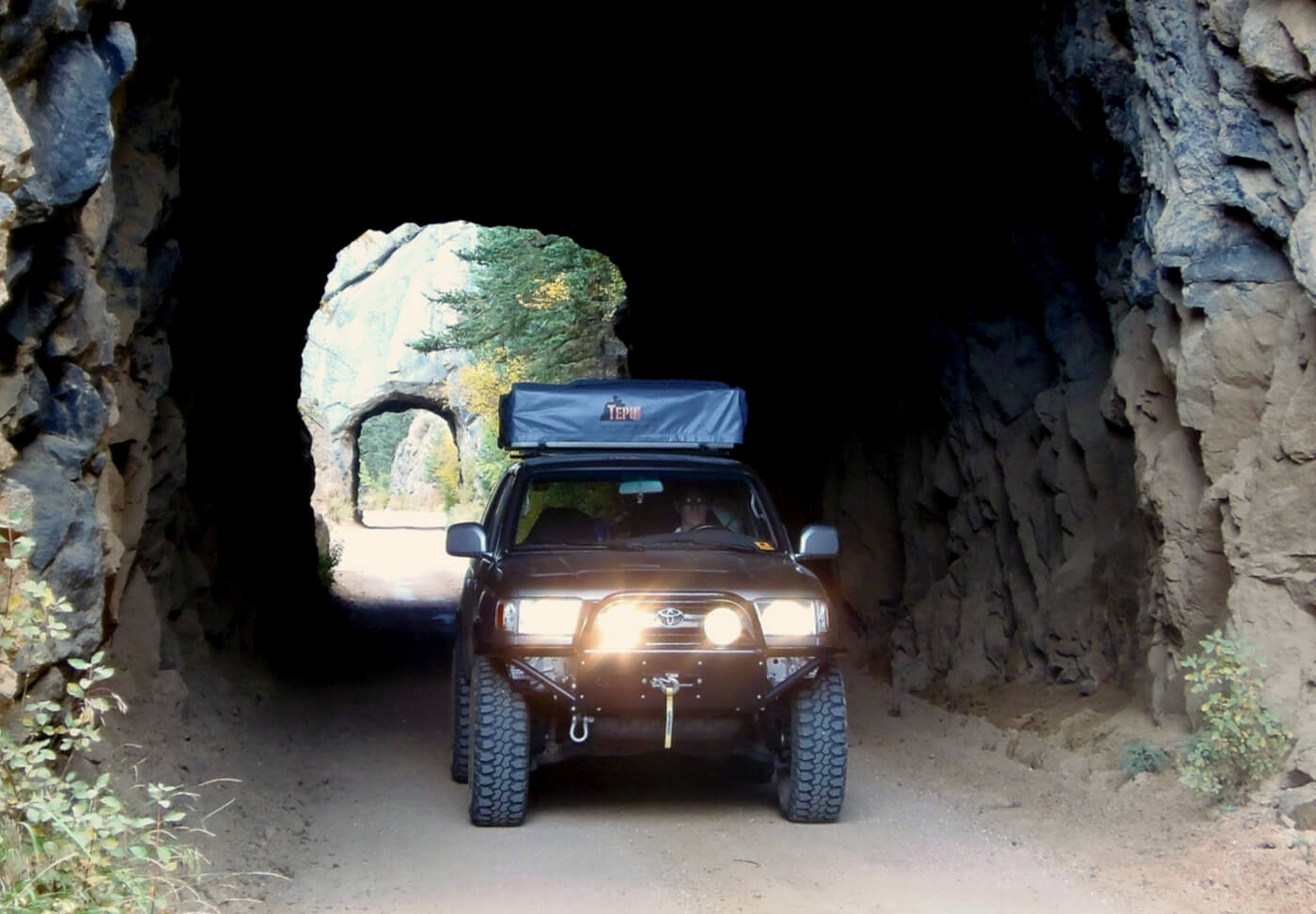House of The Gods
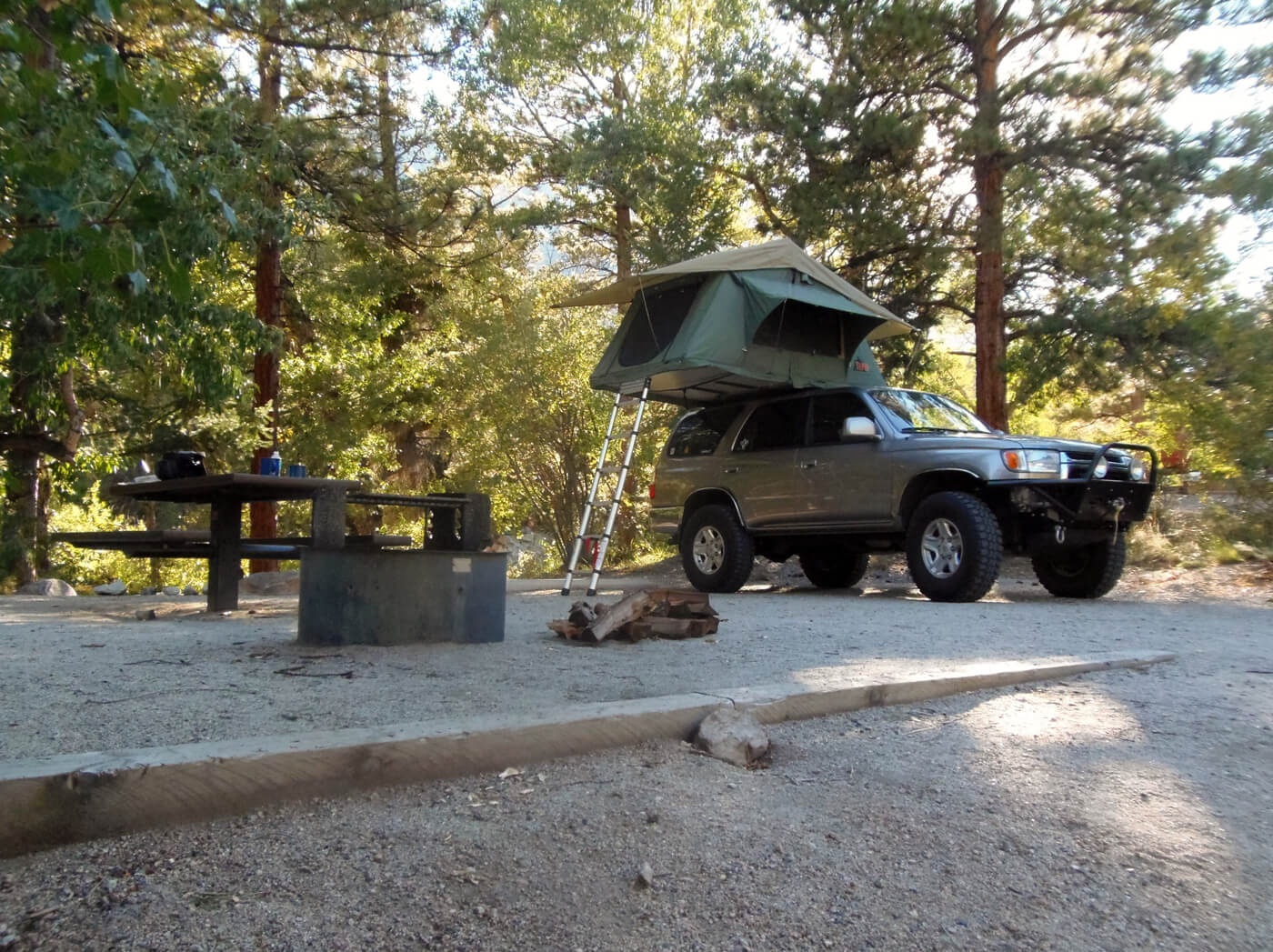
The word Tepui [te’pwi] means “house of the gods” to the indigenous people who inhabit the Gran Sabana. These table top mountains or grand mesas are found in South America, especially in Venezuela and western Guyana, and can tower up to 1000 meters above the forest floor below. Because of the significant difference in altitude from the surrounding area, they are known as “ecological islands,” having a very different climate from the ground forest… Among these, is Mount Kukenam.
As fun as geography lessons are, the reason this is relevant is because Tepui is also a Santa Cruz, California-based company that offers roof top tents (RTT). There are several models from the massive Gran Sabana, to the Autana or Ayer and my personal shelter of choice, the Kukenam Roaring Mountain. You may be noticing a theme here.
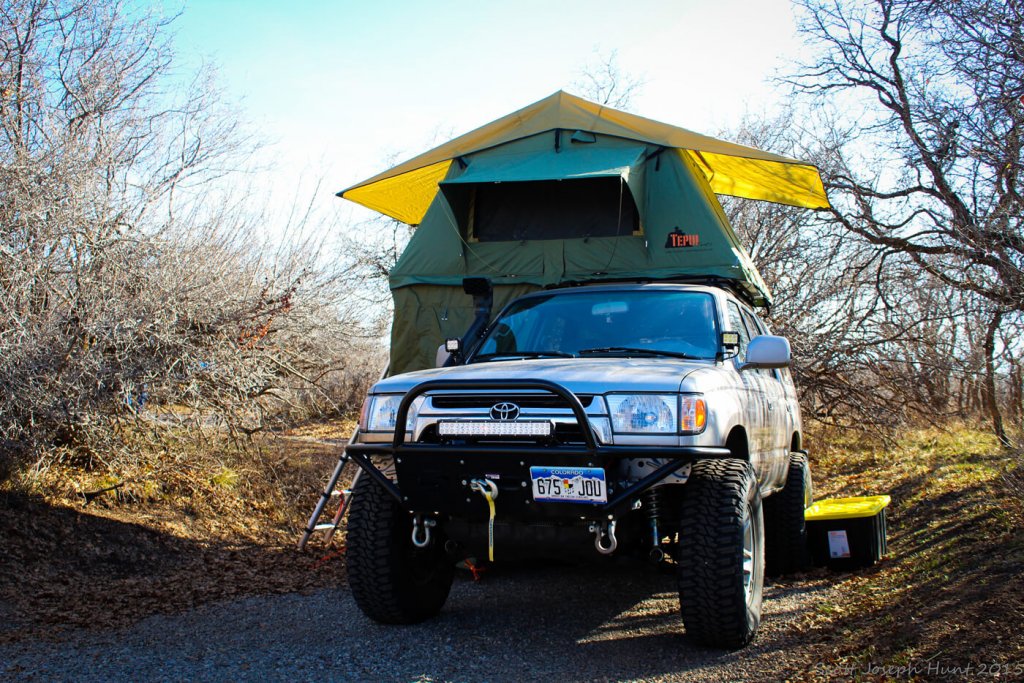
My decision to leave a prosperous career with the Union Pacific Railroad was certainly not taken lightly. Twelve-hour shifts, being on call 24 hours a day with a nearly two-hour drive to work each way was quickly sucking any quality out of my life. Leaving those big paychecks and amazing benefits behind was not ideal, but I came to realize I couldn’t be locked in a steel box for the next 30 years when I still desperately needed to spend quality time in the back country with my better half.
Within weeks of leaving the craft behind, my wife and I began heading out for short camping trips as often as we possibly could. The stress of the job had been hard on both of us, and as soon as we were free of it, a proverbial fire was lit under our asses. We started going further into the woods for longer periods of time, all the while fine tuning our gear for maximum efficiency and comfort. We’d been using an Alps Engineering 3 season backpacking tent that, for what it’s worth, is extremely good quality and could handle the weather. The inflatable air mattress, on the other hand, took up most of the usable space in the tent, was uncomfortable, and for whatever reason had me waking up in fits of claustrophobia and anxiety attacks… Okay, the air mattress probably wasn’t responsible for all of that, but I hated it. We weren’t big fans of rolling up a wet muddy tent every morning, either.
Having seen pictures of RTT’s on top of heavily modified Land Rovers cruising through the desert in various magazines over the years, I desperately wanted one. As our outdoor adventures grew more frequent, I began to do my research: overall construction, materials, wind and water resistance and, of course, price—the biggest difference being in quality and weight of the materials used. If you have a deep enough wallet, you can buy an Autohome RTT with a lightweight carbon-fiber shell that opens in under a minute.
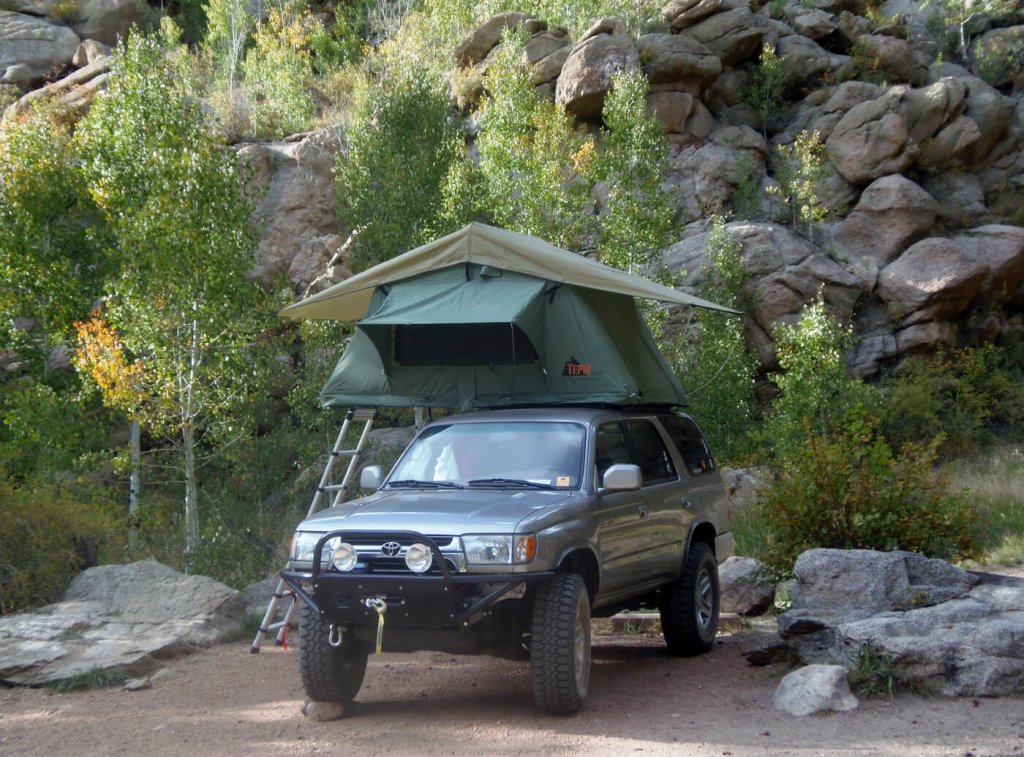
Tepui is much more reasonably priced and comparable to, maybe even a bit less expensive than, an ARB or CVT. Several of their models, like my Kukenam have different options such as the Kukenam Sky which has two open canopy panels with zipped-in mosquito netting for your star viewing pleasure, if you choose to remove the rain-fly. The Kukenam Ruggedized has heavier rip-stop fabric, diamond plate base panels, heavy-duty hinges and comes with the anti-condensation mat under the mattress. If I were to make this purchase again, the Ruggedized model would probably be in my shopping cart simply because it is just a better version of the one I already own and am impressed with. It is more than a bit on the portly side, weighing in at 165 pounds (with annex), though.
A bit shy of a year in review, I can honestly say I have no regrets with the Kukenam Roaring Mountain RTT purchase. It is durable, rated for four-season use, has shown excellent resilience to wind and keeps moisture out. I can set it up or break it down completely in about 10 minutes, and I’m getting faster all the time. Using as advertised, for three people, however, seems very optimistic. If you have a small child or a dog, and don’t have the claustrophobia issue mentioned above, you might get away with it. For two adults, the size is great, plenty of room and comfortable.
The 1000g heavy-duty PCV cover keeps the tent very safe from the elements when folded up, and a 420D Polyester Oxford rain-fly helps keep the canopy dry. The canopy is made from 260 g polyester cotton, 600D rip-stop fabric with a waterproof ventilate coating. This is where a lot of the much more expensive models can differ greatly. While the Tepui is made with high-quality fabrics, they use a coating for waterproofing and UV resistance. Some more expensive brands use actual waterproof fabrics. The coating will wear off over the years, depending on exposure. In my opinion though, this rooftop tent will be solid for many years to come, and I could literally buy two more for the price tag on a few of the others.
The first season we were using a very large zero degree, two-person sleeping bag in the tent, which made folding the tent down with it inside difficult. The hook-and-loop straps provided started to wear quickly, as we were simply loading it with too much bulk. And if I was going to take a point away from this product, it would be for the velcro straps versus a snap buckle. That being said, we have changed out the bag for something a bit less cumbersome, and are having no issues folding it up at all anymore.
The Kukenam Annex is an accessory that is sold separately for around $200. When I think about it, this puts the price tag right up there with the Autana model, which has an extended canopy with a much larger annex included. The nice thing about the extended canopy on the Autana is that the ladder is actually inside the annex which allows you to climb down the ladder in the morning to get dressed in total privacy and completely out of the elements—though this does take up more room in a small campsite.
The annex for the Kukenam will not get the same praise as the RTT it was designed for. It cannot be easily removed as it has two holes that fit around the ladder brackets, so essentially you have to remove the ladder to install or remove it. Not a big deal at all, as it folds neatly on top of the tent and under the travel cover with ease. All of that is fair enough, but the ladder is on the outside of the annex now, correct? Guess where they put the annex door? Yep. Right behind the ladder. I’m 6′ 1″ tall and 185 pounds, and I literally have to tuck, shift sideways and do some 1980’s dance moves to get inside. So if I wanted to pull a container out of the vehicle on this side and hand it to my wife, it would take a third person to hold the ladder up out of the way. Fail.
While I’ve been hard on the annex, I would like to say that it is nice to be able to stand up to get dressed, take a hippy shower while maintaining access to the vehicle interior, and we will definitely continue to use it.
Since the first draft of this review, Tepui’s General Manager has contacted me regarding the issues we had with the annex. He let me know that it has been completely redesigned with many of the issues above in mind, and that when it became available (about two weeks ago) they would send us one free of charge. Solid. Look for our second review, “House of the Gods Too” for the skinny on the new version, as well as their 6-foot awning.
The Kukenam really is a great tent that has moved our adventures to another level (pun intended). Installing a roof top tent on your vehicle really is a game changer, and I can say that I have no desire to ever sleep on the ground again.
